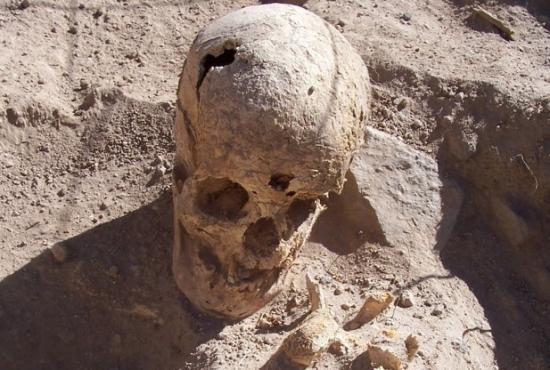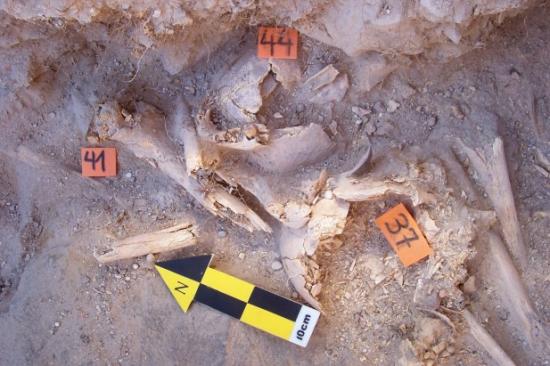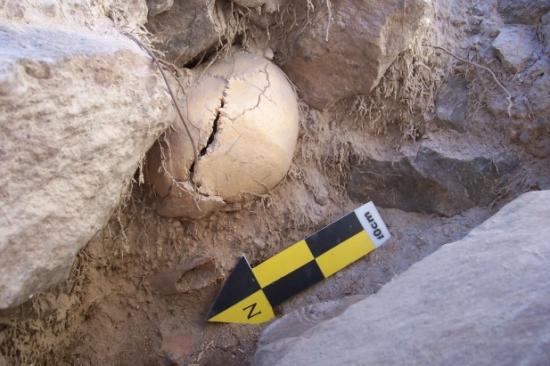Brett Smith
Source - http://www.redorbit.com/news/science/1113367530/more-than-170-mummies-unearthed-in-peru-040815/?

Flexed burial of a young woman in the middle of Tomb 5. (Credit: Matthew Edwards)
Dozens of mummies were recently discovered in Peru in what appears to be a 1,200-year-old ceremonial site where warring villages may have broken bread and held religious ceremonies.
From 2004 to 2007, a large international team of archeologists recovered over 170 mummies from numerous small tombs around the site now called Tenahaha.
The death ritual?
In a new book called Tenahaha and the Wari State: A View of the Middle Horizon from the Cotahuasi Valley, Toronto archeologist Justin Jennings described how some mummies at the site were actually smashed in to pieces and those pieces were then spread among various tombs.
“Though many individuals were broken apart, others were left intact,” Jennings wrote in his book. “People were moved around the tombs, but they sometimes remained bunched together, and even earth or rocks were used to separate some groups and individuals.”

The comingled remains of individuals 37, 41, and 44 in Tomb 6. (Credit: Justin Jennings)
When these people died, embalmers put their knees up to their shoulders and folded their arms across their chest, scientists discovered. The corpses were then tied with rope and enclosed in layers of textiles. The mummies range in age from neonate fetuses to older adults, with some of the infant mummies being entombed in jars.
According to Jennings, the later destruction and dispersal of the mummies could have been part of the Peruvian death ritual at the time, between about A.D. 800 and A.D. 1000.
“The breakup of the body, so anathema to many later groups in the Andes, would have been a powerful symbol of communitas (a community of equals),” Jennings wrote. He added that this theory doesn’t explain why some mummies remained intact.

Individual 9 Burial tucked into rock hollow inside Tomb 7. (Credit: Justin Jennings)
In addition to the mummy-filled tombs, Tenahaha also had numerous storerooms and communal social areas where people could share a meal. The larger region around Tenahaha went though periods of conflict among villages and the site could have served as a sort of neutral ground where peoples could gather in peace.
Support for this theory comes in the form of pottery at Tenahaha decorated with what looks like smiling faces. Pottery from other parts of Peru at the time was decorated with drawings of fangs and human skulls.